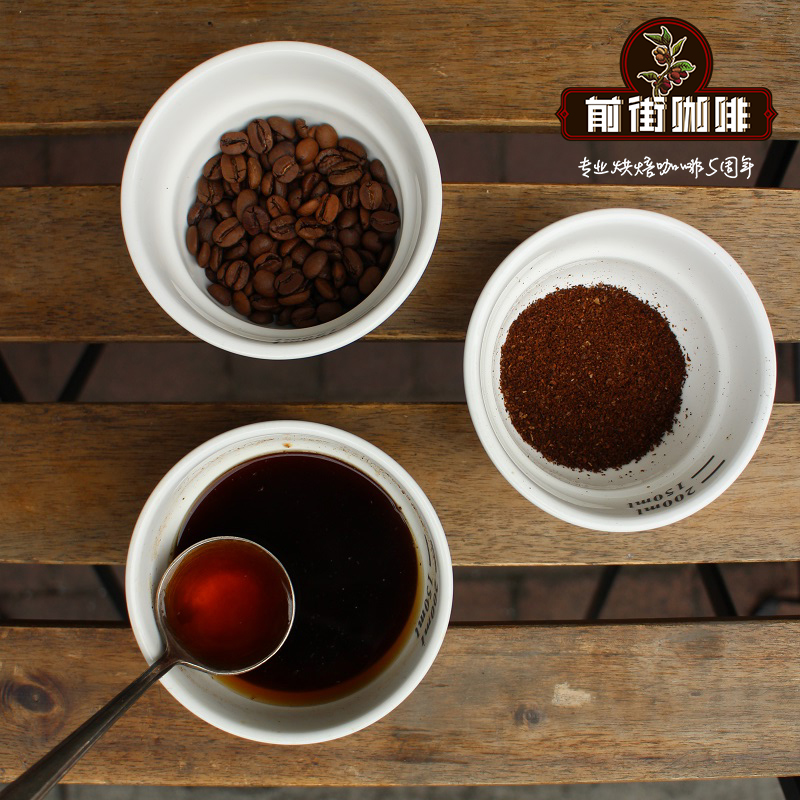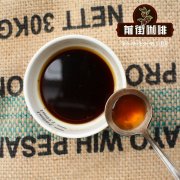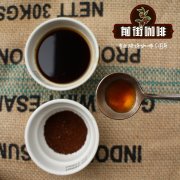What are the characteristics of Hawaiian coffee beans | how to make Hawaiian coffee powder correctly?

Professional coffee knowledge exchange More coffee bean information Please pay attention to coffee workshop (Weixin Official Accounts cafe_style)
Kona coffee beans from Hawaii have the most perfect appearance, with unusually full fruits and bright luster. The coffee has a rich aroma with cinnamon spice notes and a balanced acidity. Hawaiian coffee is the only top-grade coffee produced in the 50 states, and the United States is naturally its largest market.
characteristics
Hawaii Kona coffee beans have the most perfect appearance, its fruit is unusually full, and shiny, is the world's most beautiful coffee beans. The coffee is soft and rich, with an attractive nutty flavor, balanced acidity, as charming as the colorful colors of Hawaii and a long finish.
The world famous "Hawaii Kona" is mellow and sour coffee beans.
living environment
Kona coffee is grown on the slopes of Mauna Loa volcano on the southwest coast of Hawaii. In terms of flavor, Kona coffee beans are closer to Central American coffee than Indonesian coffee. It is of high average quality, carefully prepared, medium texture, good acidity, very rich flavor, and fresh Kona coffee is extremely fragrant. If you think your coffee is too thick, African too sour, or Central American too rough, Kona may be for you. Kona is like a girl walking in the Hawaiian sun and breeze, fresh and natural.
Kona coffee beans are evenly shaped, with intense acidity and sweetness, and a smooth, moist taste. Because it grows on volcanoes and has a high density of artificial cultivation, each bean can be said to be a spoiled "lady", beautiful, plump and baby-like delicate skin.
Although Hawaii is often affected by tornadoes, the climate conditions are ideal for coffee growing. There is plenty of rain and sunshine here, and there is no worry about frost. In addition, there is a strange natural phenomenon called "free shade." On most days, around 2 p.m., white clouds appear in the sky, providing the coffee trees with the shade they need. In fact, it is the natural conditions that make Kona produce more Arabica coffee than any other plantation in the world, and maintain a high quality, unique growth and climate to create a stronger coffee flavor.
Unfortunately for coffee fans, only about 1400 hectares produce Kona coffee. And because of Hawaii's high income levels and high tourist numbers, Kona coffee is so expensive that even kona blend (less than 5% kona) is sold. Neighboring islands such as maui, kauai and molokai have also begun growing coffee commercially.
taste
Kona coffee is truly a rare gem of the world and is not easy to find. Real Hawaiian Kona coffee has a caramel-like sweetness that gives you a unique pleasure and leads you slowly into the transcendent state of coffee tasting.
Hawaii's coffee industry is among the most tightly regulated of all coffee producers, with the highest labor costs and the best investment levels.
Hawaii's coffee industry has to compete for space with expanding tourism. Most coffee is grown on the slopes of Mauna Loa. Mauna Loa was originally a volcano located in the western part of the Kona region of Hawaii. The length of the coffee producing area is about 30 kilometers, and its cultivation area is mainly concentrated in the north and south of the area. Coffee trees are grown in relatively inhospitable areas, but the soil is fertile and contains volcanic ash. Despite the physical effort required to start cultivation and the difficulties involved in managing it, it is reassuring to note that coffee trees in Kona (at least those growing above 90 metres) appear to be immune to any pests and diseases.
Real kona coffee is a real gem and not easy to find. The best Kona coffees are divided into three categories: ExtraFancy, Fancy and NumberOne. This third-class coffee is produced both on the estate and under natural conditions. Most of the coffee marketed as "Kona" contains less than 5% real Hawaiian Kona coffee. Another good Hawaiian coffee can be found in the United States-Kai Farms.
END
Important Notice :
前街咖啡 FrontStreet Coffee has moved to new addredd:
FrontStreet Coffee Address: 315,Donghua East Road,GuangZhou
Tel:020 38364473
- Prev

What is the name of Hawaiian Coffee Bean Brand | how is Hawaiian coffee made?
For more information on coffee beans, follow the Coffee Workshop (Wechat official account cafe_style) in 1813, a Spaniard first grew coffee in the ManoaValley Valley of Oahu, which is today the main campus of the University of Hawaii. In 1825, a British agronomist named John Wilkinson transplanted some coffee from Brazil.
- Next

What is the price of kona coffee in Hawaii | what is the flavor of kona coffee made by hand?
More information on coffee beans Please follow Coffee Workshop (Wechat official account cafe_style) Kona, Hawaii, is a rare species that can only be grown on volcanic slopes in the Kona region of Hawaii. The taste is rich and mellow, with a mixed aroma of wine, fruit and spice, with a special flavor. The Kona coffee of choice has a moderate sour taste and
Related
- Beginners will see the "Coffee pull flower" guide!
- What is the difference between ice blog purified milk and ordinary milk coffee?
- Why is the Philippines the largest producer of crops in Liberia?
- For coffee extraction, should the fine powder be retained?
- How does extracted espresso fill pressed powder? How much strength does it take to press the powder?
- How to make jasmine cold extract coffee? Is the jasmine + latte good?
- Will this little toy really make the coffee taste better? How does Lily Drip affect coffee extraction?
- Will the action of slapping the filter cup also affect coffee extraction?
- What's the difference between powder-to-water ratio and powder-to-liquid ratio?
- What is the Ethiopian local species? What does it have to do with Heirloom native species?

